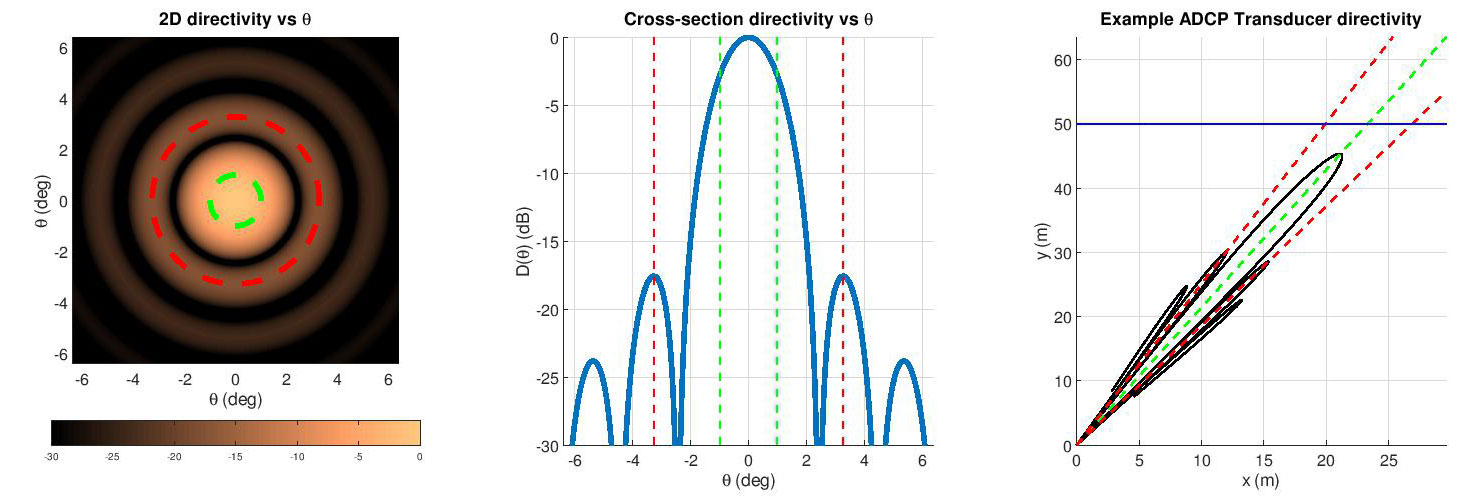How can we help?
Sidelobes are ubiquitous in many sensors, including ADCPs, and affect data captured. Therefore, they are an important consideration when interpreting ADCP data.
What is a Sidelobe?
ADCP transducers are designed to be directional, that is, sensitive to water velocities in a specific direction. This direction is called the ‘main lobe’, and its angular extent or beamwidth (in radians) can be approximately calculated in terms of the diameter of the transducer, (in metres), and the wavelength of waves transmitted or received by the device, (in metres): ∆θ=λ⁄D.
For ADCPs, ∆θ tends to lie in the range of a few degrees.
While the main lobe accounts for most of the sensitivity, a smaller fraction is found in sidelobes – directions of sensitivity away from the main lobe. The combination of main lobe and sidelobes is called the ‘directivity pattern’ of the sensor.
Simulations of the main lobe and sidelobes for the Origin 600 ADCP. The main lobe beamwidth is ±1°, while the first sidelobe is located at an angle approximately 3.7° away from the main lobe. The first sidelobe (the peak in the pattern closest to the main lobe) is around -18 dB lower power than the main lobe, or about 1.6% compared to the main lobe.

The directionality of the sensor is identical in both transmission and reception. This means that when the ADCP transmits, the amount of power delivered in the direction of the first sidelobe is 1.6% of that in the main lobe. Similarly, the strength of a backscattered signal received in the first sidelobe would be 1.6% of the power of the same signal received in the main lobe.
The signal received from the transducer consists of contributions from the entire directivity pattern; all directivity information is lost. It is therefore impossible to tell if a backscattered signal came from a weak source in the main lobe or a strong source in a sidelobe.
What consideration should be given to sidelobes when interpreting Origin data?
The contribution of sidelobes is normally so small it is neglected. However, for upward‑facing ADCPs, sidelobes are a problem near the surface where sidelobe pickup from the surface may overwhelm main‑lobe pickup from the water.
When interpreting ADCP data, it is essential to consider contamination by returns from the first sidelobe intersecting the surface. In the example below, for a surface return 33 m from the ADCP, the contamination occurs over approximately 2 m beneath the surface, or approximately 6% of the data. This data should therefore not be considered for analysis of water currents.
Backscatter intensity as a function of slant range from Origin 600 data. The water surface is located by the peak in the intensity 31-33 m from the ADCP (in green). Red areas indicate near (left) and far (right) sidelobe contamination.

Contact support@sonardyne.com for more information.
Looking for more content?
Find more product support in our Knowledgebase
Haven't found what you're looking for?
Then speak to one of our team for expert help




